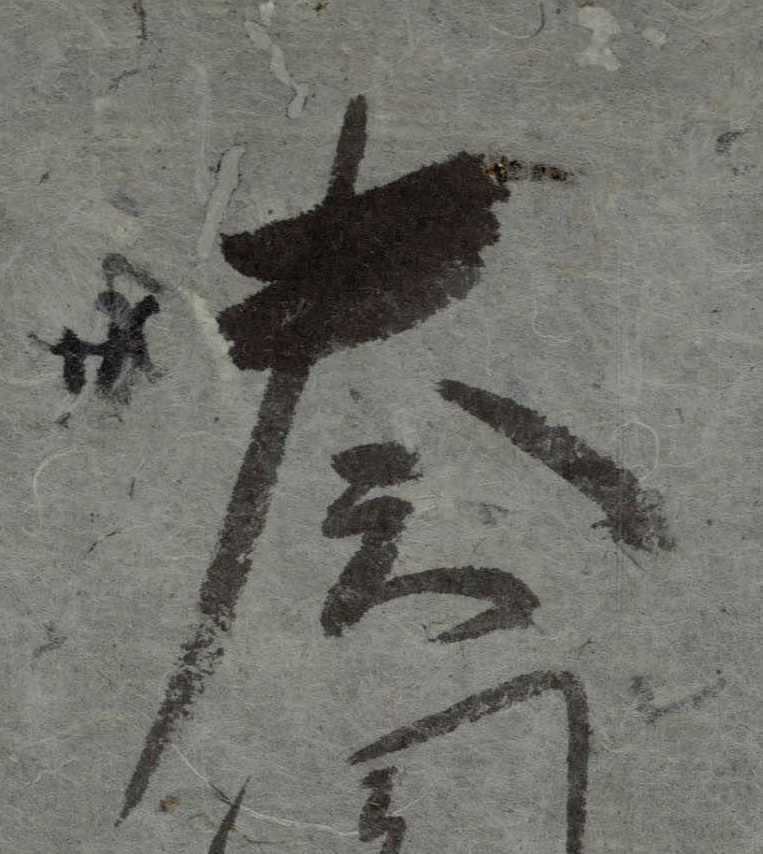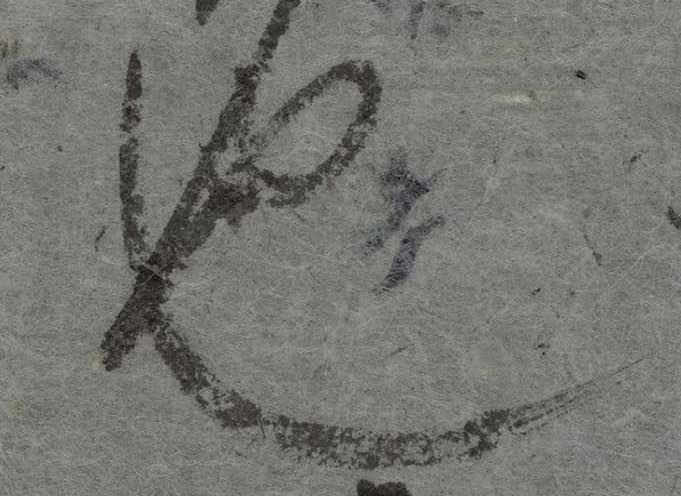What are the most exciting things about ancient documents?
Deciphering cursive handwritten characters? Appreciating handwriting and brush strokes by famous persons?
The answers will vary. Studies of ancient paper used may be one of them. Today’s story is focused on paper used in ancient documents.

The paper of this document is not white, but is faint black in color, because it was made by recycling used paper after writing. This kind of paper is called “Shukushi (宿紙)”. Let’s have a close look at this document.
To the top of the character “奏”, the first character on the second line, and to the bottom of the character “也”, the fifth character on the fifth line, you can find some marks of ink. These are ink marks from used paper. In the production process of Shukushi, the material used paper is wetted, beaten, and shredded. It seems that these activities were not adequate in the production of this paper.
Shukushi was often used for documents in which Kurodo (蔵人), secretaries to the Emperor, relayed the Emperor’s command. The term “Usuzumi no Rinji (薄墨の綸旨 (lit. Emperor’s command written on light black paper))” clearly indicates that custom. The photo above shows a typical example, where Shukushi was used for relaying Go-Daigo Emperor’s Command (後醍醐天皇綸旨). For the purpose of emphasizing the sacredness and solemnness of Rinji, various processing techniques were developed to produce Shukushi in darker color.
On the other hand, Shukushi was also used for daily use, though in much lower quality compared to the paper used for Rinji, closer to the image of recycled paper in the present day.
(Kaji, Materials Section, the Kyoto Institute Library and Archives)

